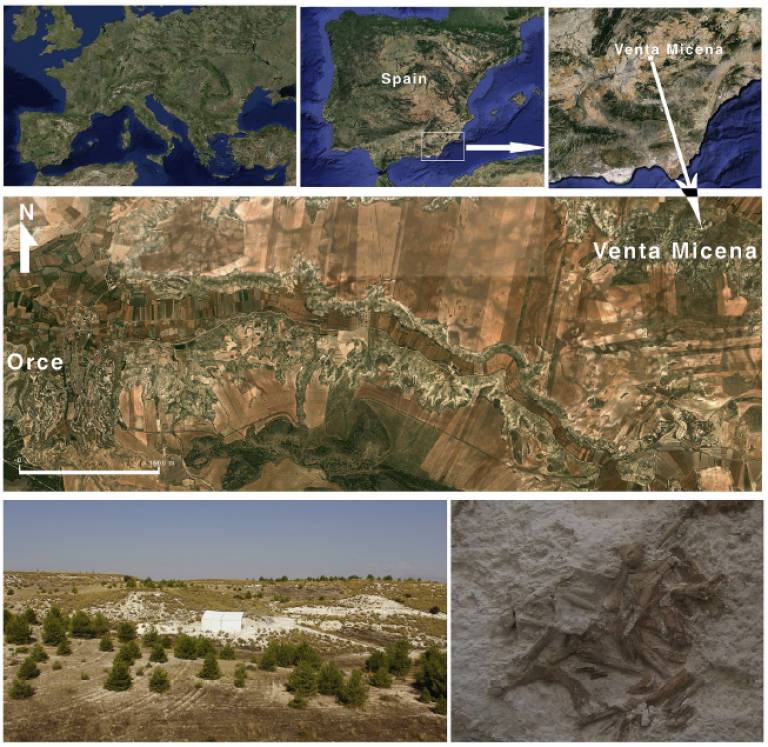The timing of the human arrival in Europe was not a matter of ecological opportunity
11 April 2017
With an age of ∼1.
 6-1.5 Ma, the Early Pleistocene site of Venta Micena (Orce, Baza Basin, SE Spain) has provided the large mammals assemblage of Late Villafranchian age with higher preservational completeness in Western Europe and offers a unique opportunity to analyze the food webs of the mammalian paleocommunity before the first human arrival in this continent. Taphonomic analysis of the fossil assemblage has shown evidence of carnivore involvement, particularly hyenas, in the bone accumulating process. In this study a mathematical approach is employed based on Leslie matrices to quantify the biomass of ungulates available to the members of the carnivore guild as well as the pattern of resource partitioning and competition intensity among them. The results obtained show that although the biomass of primary consumers available to the secondary consumers was lower than the value expected under optimal conditions, more than half the individuals and biomass of carnivores expected would be reached, which allowed a viable ecosystem in Venta Micena. In fact, the biomass available for the members of the carnivore guild is 25-30% greater than the estimates obtained for two nearby sites, Barranco León-D and Fuente Nueva-3, which are somewhat younger (∼1.4 Ma) and preserve the oldest evidence on human presence in this region. Given that the competition intensity estimated in the carnivore guild of Venta Micena was lower than in the latter sites, this suggests that the timing of the first human dispersal in Western Europe was probably not a matter of ecological opportunity.
6-1.5 Ma, the Early Pleistocene site of Venta Micena (Orce, Baza Basin, SE Spain) has provided the large mammals assemblage of Late Villafranchian age with higher preservational completeness in Western Europe and offers a unique opportunity to analyze the food webs of the mammalian paleocommunity before the first human arrival in this continent. Taphonomic analysis of the fossil assemblage has shown evidence of carnivore involvement, particularly hyenas, in the bone accumulating process. In this study a mathematical approach is employed based on Leslie matrices to quantify the biomass of ungulates available to the members of the carnivore guild as well as the pattern of resource partitioning and competition intensity among them. The results obtained show that although the biomass of primary consumers available to the secondary consumers was lower than the value expected under optimal conditions, more than half the individuals and biomass of carnivores expected would be reached, which allowed a viable ecosystem in Venta Micena. In fact, the biomass available for the members of the carnivore guild is 25-30% greater than the estimates obtained for two nearby sites, Barranco León-D and Fuente Nueva-3, which are somewhat younger (∼1.4 Ma) and preserve the oldest evidence on human presence in this region. Given that the competition intensity estimated in the carnivore guild of Venta Micena was lower than in the latter sites, this suggests that the timing of the first human dispersal in Western Europe was probably not a matter of ecological opportunity.
Resource availability and competition intensity in the carnivore guild of the Early Pleistocene site of Venta Micena (Orce, Baza Basin, SE Spain)
Guillermo Rodríguez-Gómez, Paul Palmqvist, Sergio Ros-Montoya, M. Patrocinio Espigares, Bienvenido Martínez-Navarro
DOI: 10.1016/j.quascirev.2017.04.006
 Close
Close

